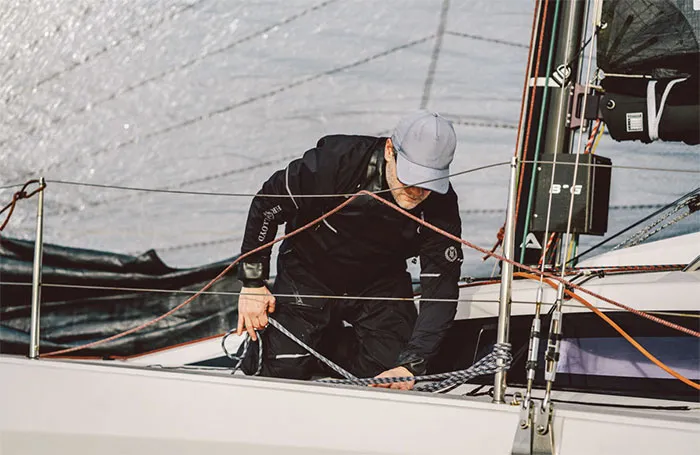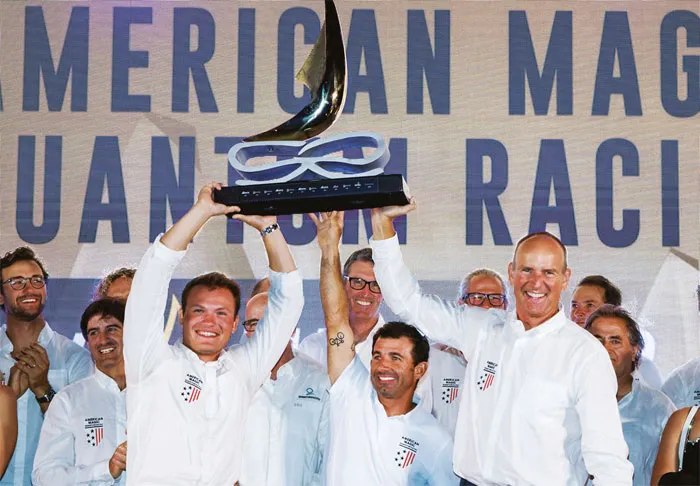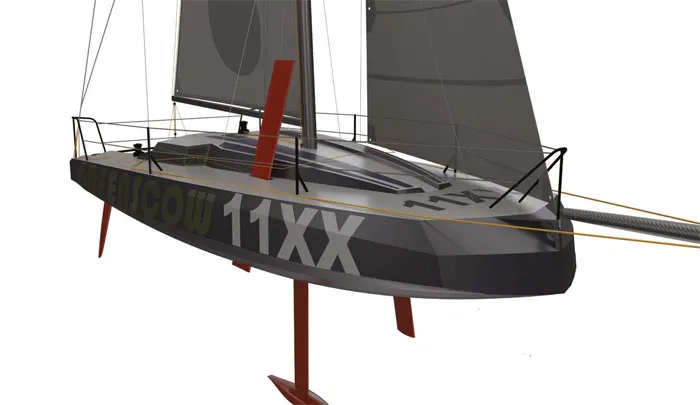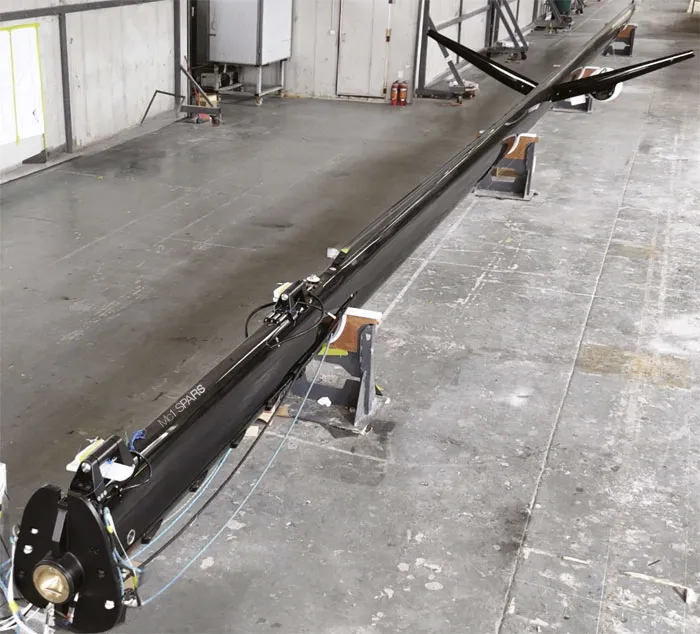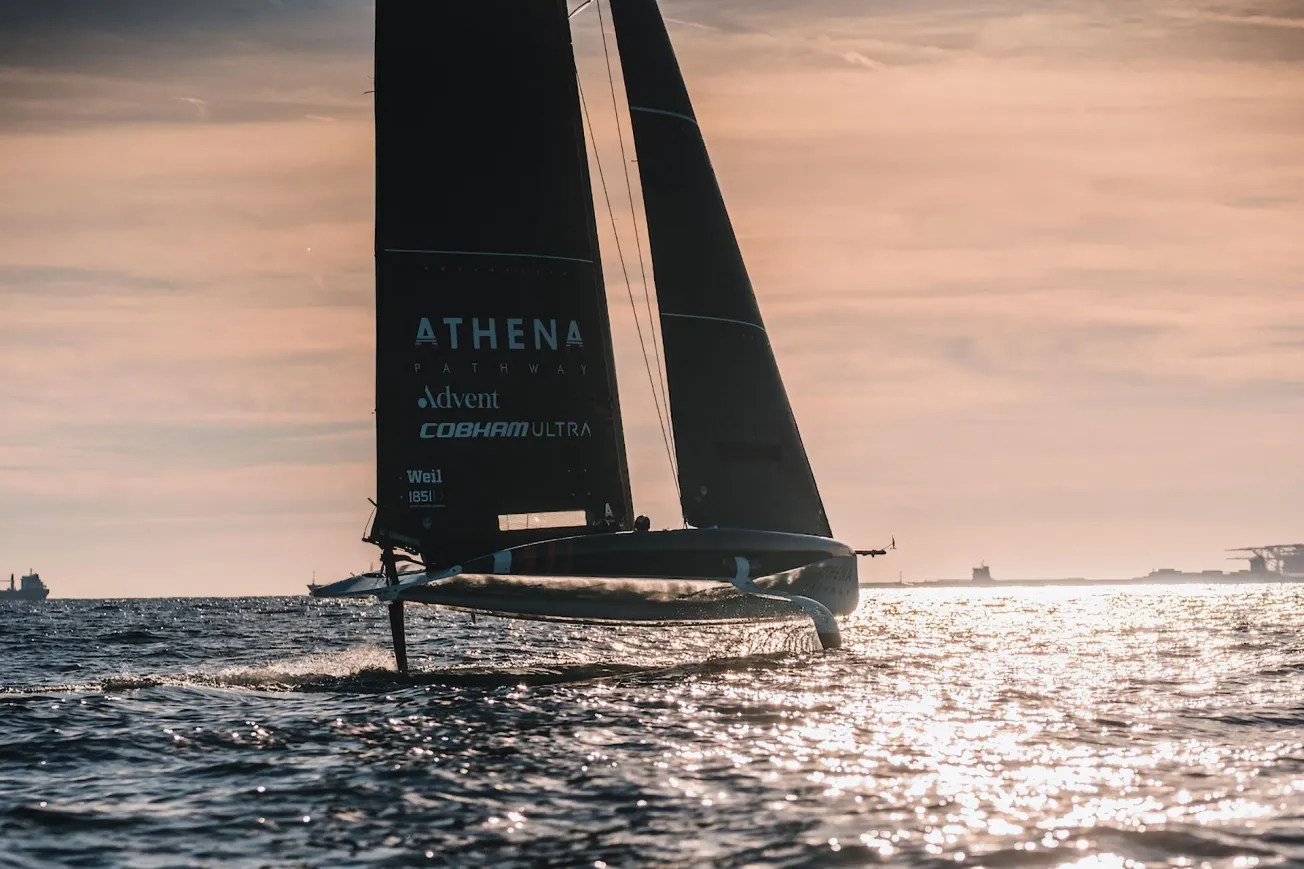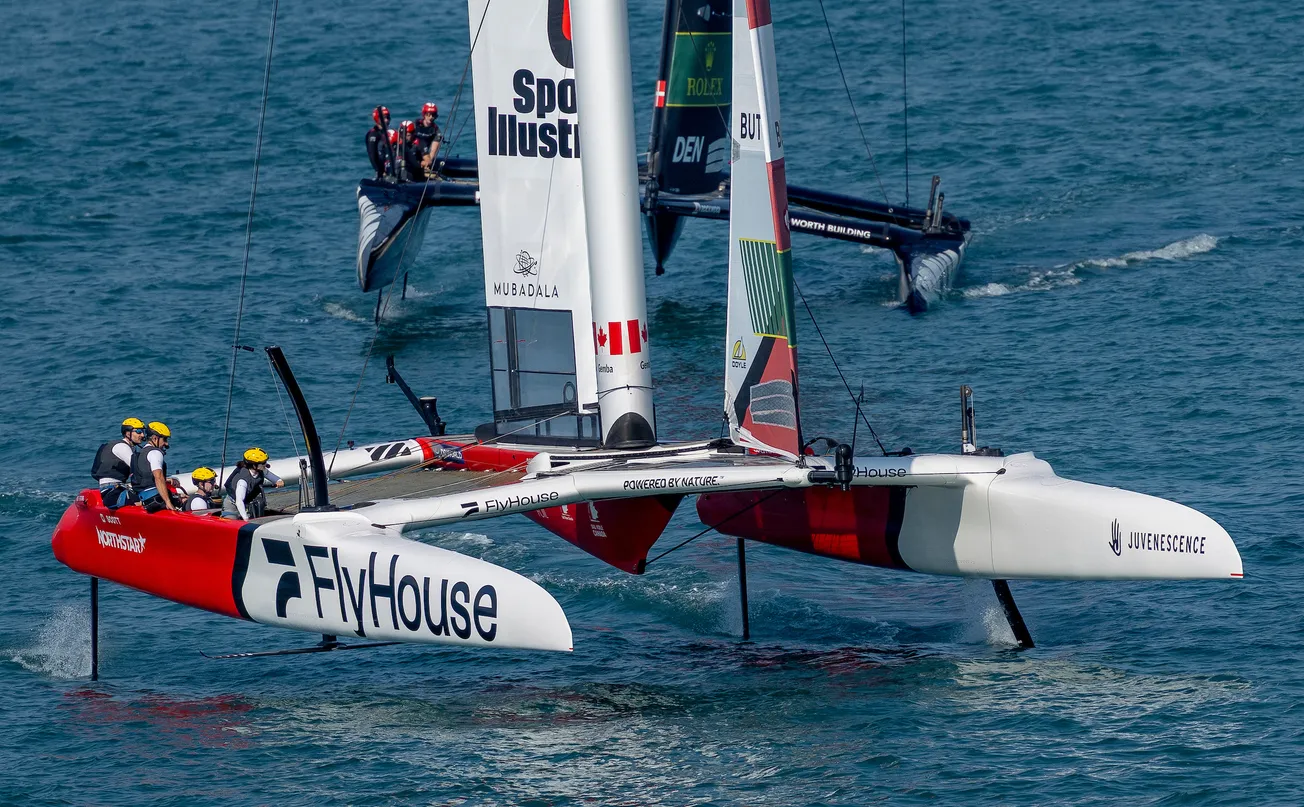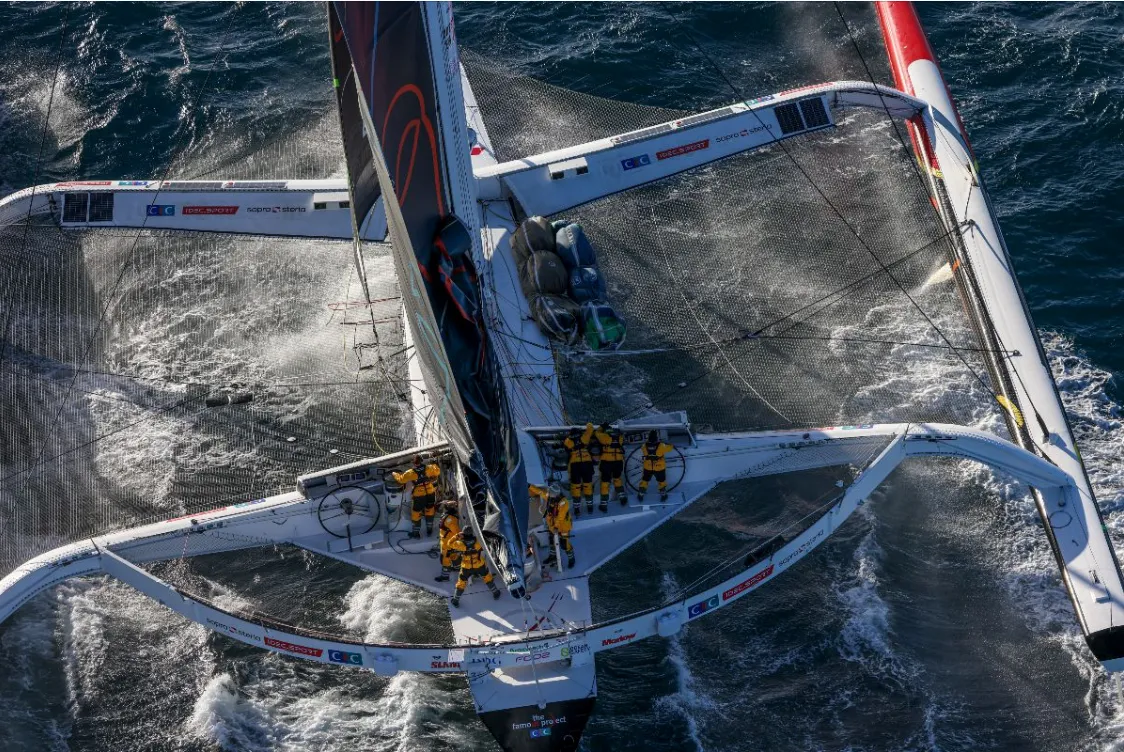
The Henri-Lloyd Dynamic sailing range is the outcome of an intense 24-month development process that included extensive collaborations with world-class sailors.
The garments, including jackets and salopettes, are impressively lightweight, yet rugged and effective. They were an immediate hit with sailors across the spectrum of racing disciplines, who value the combination of style, functionality and practicality. The range is ideal for a wide variety of boats from J/70s through Cape 31s to TP52s and even superyachts, meeting a growing demand from the ever more athletic world of Grand Prix sailing, where a relentless focus on weight reduction and improved mobility is essential.
‘It’s innovatively designed for optimal movement, comfort and durability,’ says GBR SailGP team member Nick Hutton. In the offshore sphere, ORC double-handed world champion Tim Sandberg is equally impressed, saying: ‘I like the overall design very much, not too heavy but still a robust jacket. I like the details and when you start examining you realise a lot of thought has gone in to the design.’
Henri-Lloyd’s director of experimental design, Matteo Alfieri, started the development process with an analysis of fabrics used by other active outdoor sports, including cycling and running. He then began a global search that identified more than 100 options. 'We needed to be absolutely sure we had the right one,’ said Henri-Lloyd CEO Knut Frostad.
The final choice is a lightweight, advanced three-layer product from a Japanese mill that has very high levels of wind resistance and waterproofing, as well as classleading breathability, plus excellent tear and abrasion resistance, with 33 per cent more strength than fabrics of a similar light weight.
This Dri-Pro fabric also benefits from two-way stretch, which allows for a snug fit without impeding freedom of movement. Henri-Lloyd’s designers rotated the upper panel of the jackets across the back by 45 degrees, so that it will also stretch across the bias, creating a four-way stretch element in the part of the garment where extra flexibility is most useful. This allows for a more comfortable and tighter fit that eliminates excess material, without compromising flexibility or ease of movement.
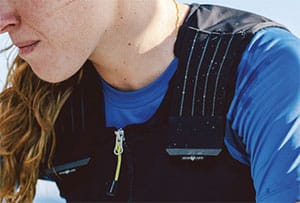
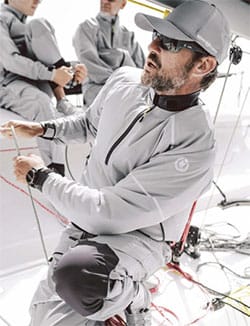
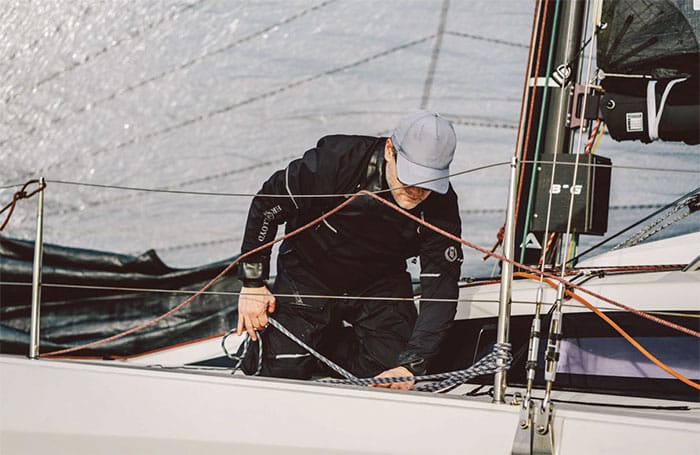
Left: Waterproof zips are used, thus there is no need for storm flaps. | Middle: Low-profile impact protection for knees is built in, boosting comfort but adding almost no bulk. Right: Main image: An extensive programme of product development with input from top pro sailors has resulted in many design innovations.
‘Making a two-way stretch material into four-way by altering the angle of the back panel fabric is a great innovation by our designer,’ Frostad says. ‘It’s a game-changer in terms of both comfort and flexibility for the jackets, as excess material used to play a key role in achieving freedom of movement, but that created unnecessarily bulky garments.’
These aspects particularly appeal to professional bowman Matt Cornwell, who says: ‘It’s great to find sailing waterproofs that have the stretch and flexibility to match the needs of modern yacht racing, while retaining excellent protection against the elements.’
The advantages of light weight and flexibility aren’t associated with a loss of performance in other respects. The fabric has a 20K waterproofing rating, the same as Henri-Lloyd’s top level offshore products and also scores highly on breathability (+20k g/m²/24hr).
A further benefit is that the Dynamic kit is very compact, which makes for easy travel. ‘This is the lightest, most compact kit I have ever owned or seen on the market,’ says charter skipper and offshore double-handed co-skipper Louise Clayton. ‘Being able to just take one small dry rucksack and know that I am protected from the elements is a game-changer for me.’
This aspect also opens up the possibility of taking more than one set of foul weather gear on longer offshore events such as the Rolex Fastnet Race. The option to change out of full-on offshore kit when conditions improve after a wet and windy upwind first leg makes a huge difference to overall comfort levels.
Thoughtful design and ergonomics were also key to the development process and the amount of knowledge, expertise and attention to detail that has gone into this range impressed sailors across the board. ‘The material is super-tough so you know you’re going to stay dry and warm, but it’s also super-soft with great textual feel,’ adds Clayton.
Neat features extend to small details that can make a big difference in challenging conditions. Tactile, dip rubberised, ridged touch points on cuff adjustment tabs, for instance, make them easy to operate even with wet and slippery hands. Equally, the use of waterproof zips means that no bulky storm flaps are needed.
A great deal of thought from a product design perspective also went into maximising breathability. One example is that foul weather gear traditionally has a double layer of fabric at the chest pockets, but that of course blocks breathability. Instead, mesh is used for the inner part of the pocket, thus retaining the fabric’s inherent breathability.
In the hunt for the ultimate jacket or smock it's easy to overlook the importance of salopettes. Yet we wear these garments for longer than any other outerwear and they must be able to withstand sitting on a waterlogged deck for extended periods, while also delivering a high level of comfort through breathability and freedom of movement.
Henri-Lloyd therefore went to great lengths to create the ultimate salopettes for this type of sailing. Early feedback from TP52 sailors highlighted the benefit of low-profile impact protection for knees. The solution adopted adds almost no bulk and doesn’t impact on the fabric’s stretch properties, yet greatly increases comfort. It’s an innovation that particularly impressed Cornwell, who says: ‘the much-needed knee protection is added in a subtle but effective way.’
Other features include the use of stretch Cordura for reinforcement and a diamond shape crotch that adds longevity, but is harder to manufacture – one of many examples where Henri-Lloyd has eschewed an easy solution in favour of prioritising user benefits.
Unlike Henri-Lloyd’s offshore and ocean ranges, the women’s salopettes don’t have a drop seat. That might initially appear to be a surprising oversight, but this was a considered decision, reflecting that typical regatta races last only 50-60 minutes, so toilet breaks are taken between races. The bulk, weight and complexity of the zips required for a drop seat can therefore be dispensed with, while careful tailoring of the women’s sizes ensures an excellent fit.
Two jackets are offered because the need for protection varies with roles on board. The afterguard of a Swan 80, for instance, can therefore wear a different product from those on the foredeck, with no risk of compromising the compelling aesthetics of perfectly coordinated team kit.
Henri-Lloyd has also carefully curated a choice of three colourways in both male and female sizing that makes this an ideal range to kit out an entire crew in top-quality coordinating gear. With this in mind, all the outer garments are plain fronted, maximising options for adding teams’ own branding.
The range is based around five key outer shell products, two of which are unisex, with the three that are offered in male and female fits that share the same colour options, allowing mixed crews to have a unified team look. Sizing ranges from XS to 3XL.
There are also a number of technical inner layers designed to complement the outer shells. The matched male and female Dynamic tees, for instance, are a higher specification product than Henri-Lloyd’s standard product, made of a UPF50 fabric with a full raglan sleeve that reduces chafe and allows easier movement. In addition, the underarm and side panels are made of a fine meshstyle fabric that maximises airflow.
Chemicals, including perfluorocarbons (PFC) and polyfluoroalkyl substances (PFAS) have long been used to waterproof fabrics. However, we now know that they are harmful to both humans and to the environment. Henri- Lloyd’s Knut Frostad believes it’s essential to address this problem, pointing out that ‘California has already made it law that since January 2025 all the chemicals that are used in clothing today to make it waterproof have been banned, and within two years in Europe the same legislation will be rolled out.’
Dynamic is the first marine clothing range to have a 100 per cent PFC-free durable water repellent coating (DWR) and be PFAS-free for the face fabric and internal membrane. Continuing the sustainability theme, it's also made of 100 per cent recycled polyamide fabrics. ‘We’re dedicated to making the right decisions to lessen our impact on the world’, adds Frostad, ‘and at heart is our belief in producing timeless, quality products that last and become part of your life's journey.’
The Dynamic range immediately started making waves when it was first unveiled to the industry and won a special mention at the DAME Design awards in Amsterdam. The jury praised the kit for its, “desirability, usability and obvious step forward in sustainability”.
Get all areas access to Yacht Racing Life with a Full Membership free 30-day trial. There's no obligation and you can cancel at anytime.


